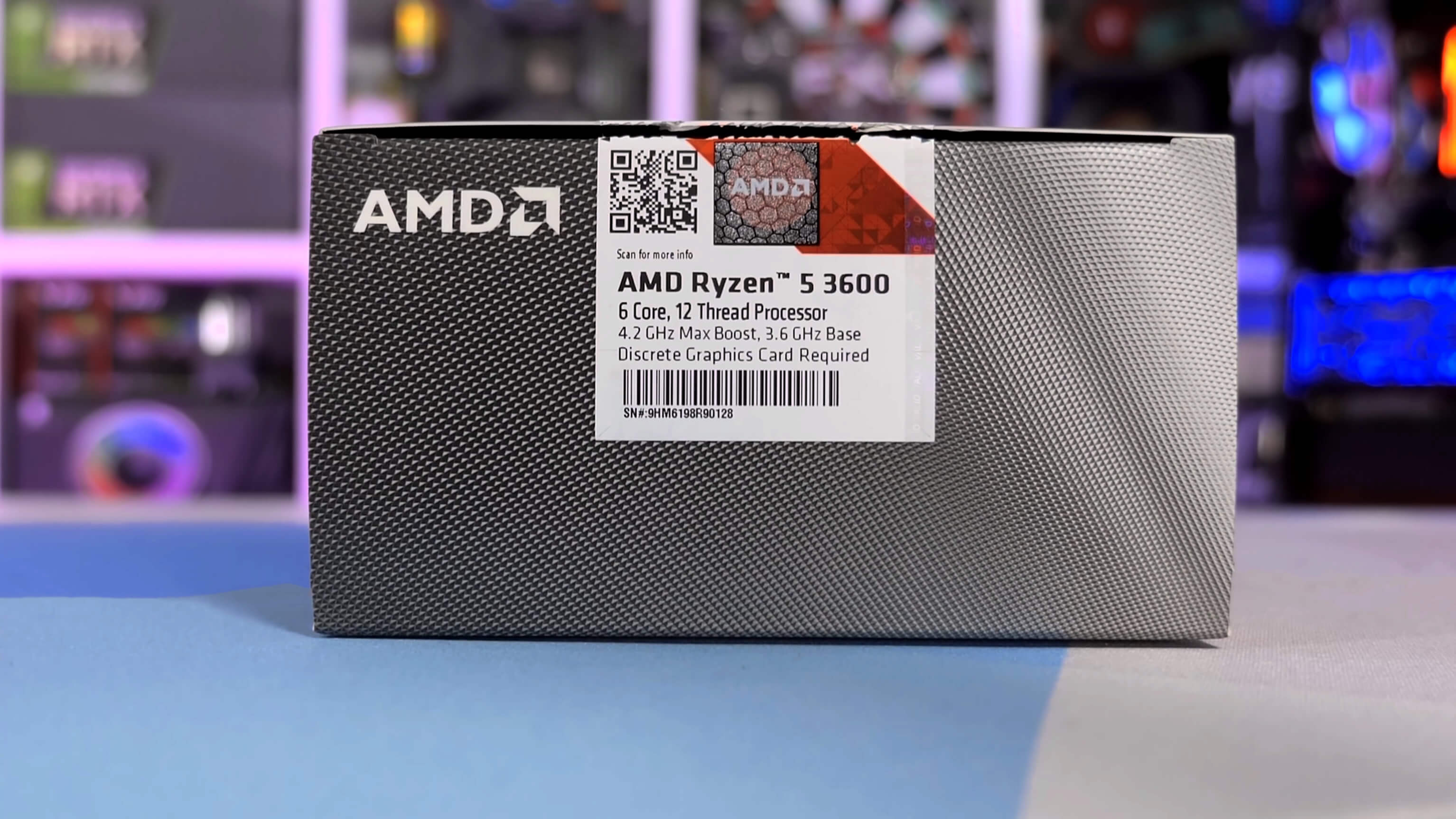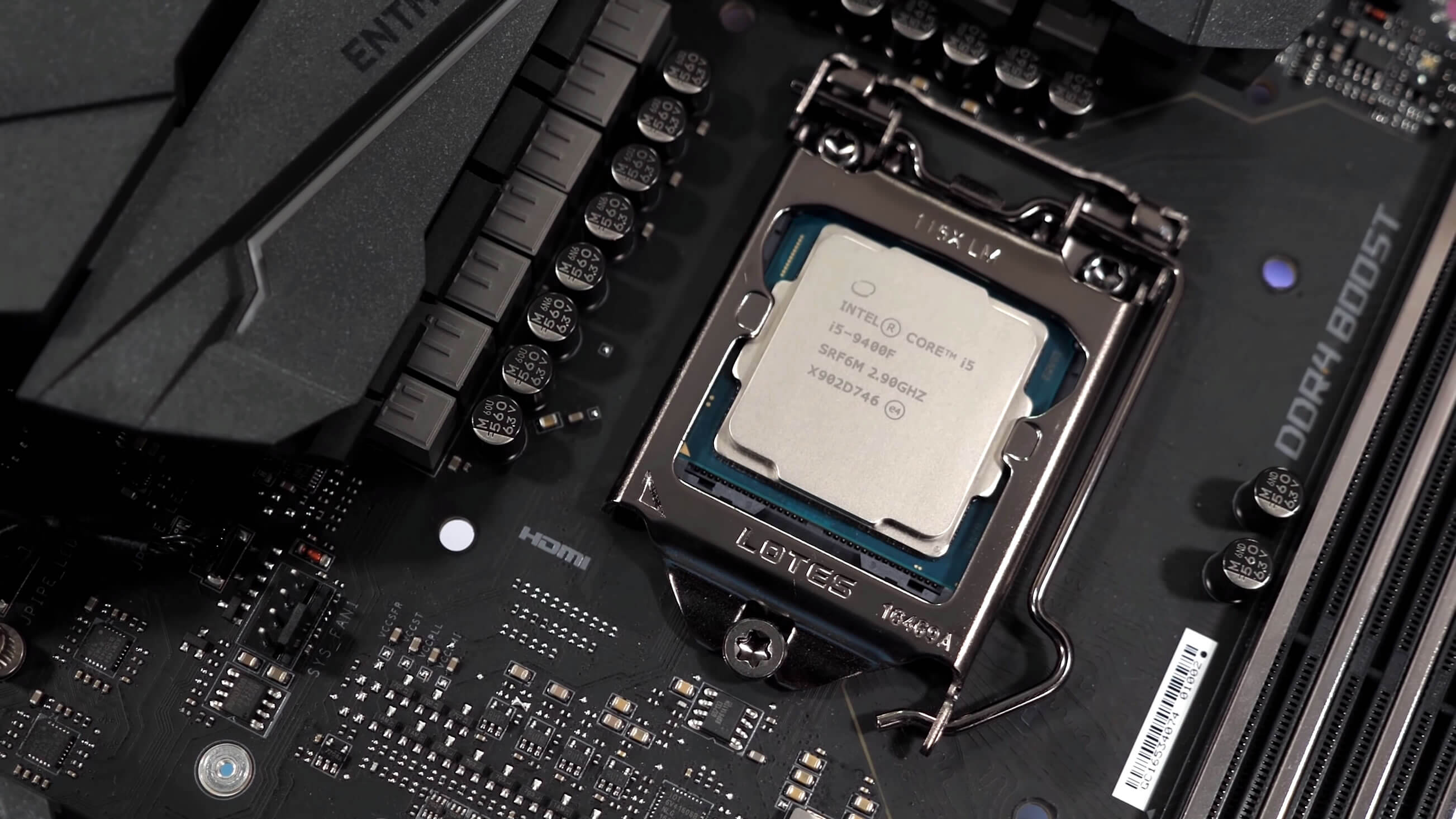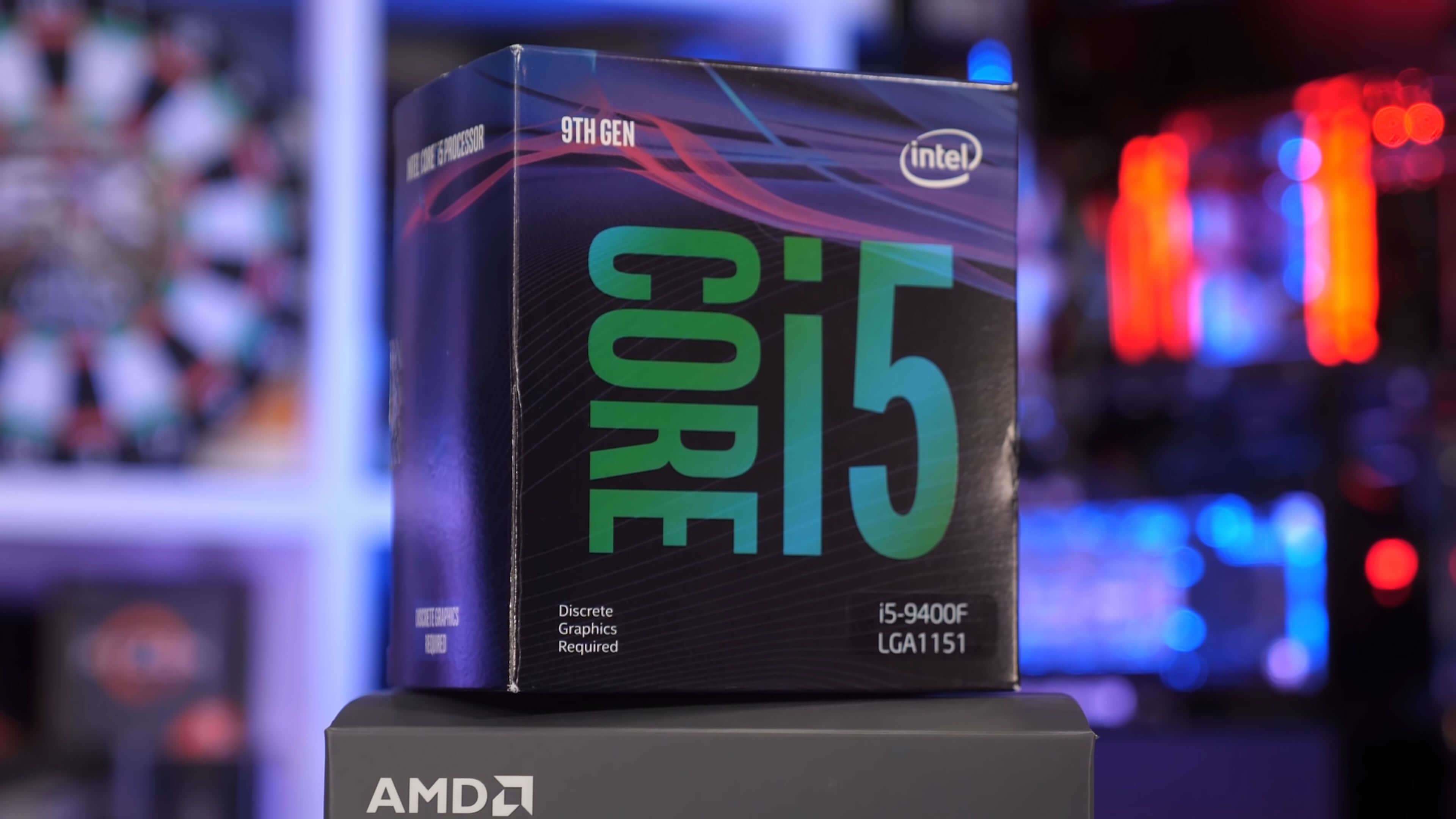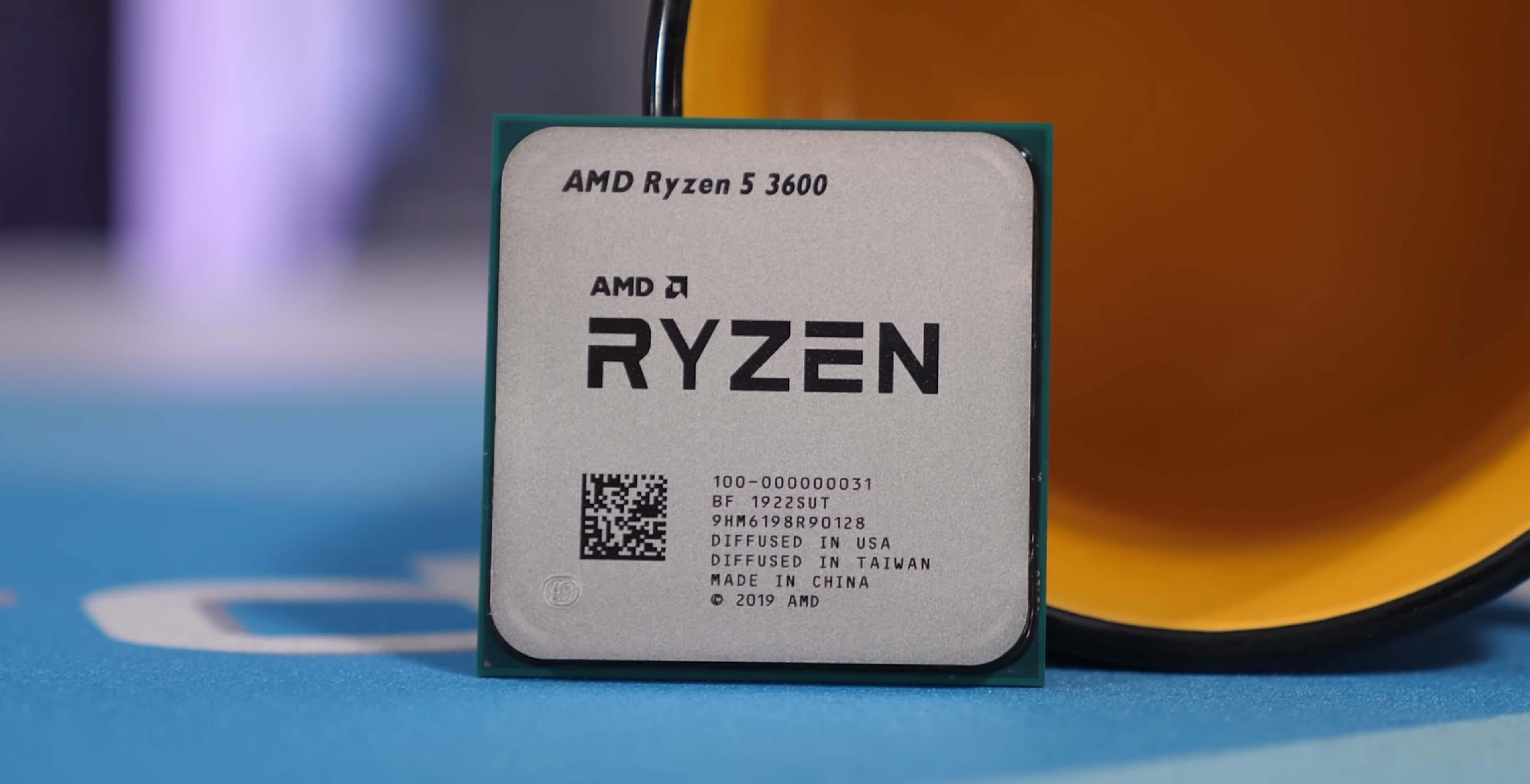When we reviewed the new Ryzen 5 3600 we had plenty of positive things to say about it, and note that in our review we compared it to the more expensive Core i5-9600K. Regardless, that was a battle that AMD largely won. Even so, we've seen many requests of a direct comparison to the Core i5-9400F which is now more affordable than ever at just $150.
The 9400F is the cheapest 9th generation Core i5 processor you can buy. For the past two months it's been offered at the $150 price point which is roughly a 15% discount since launch. That also makes it 25% cheaper than the R5 3600, so budget-minded builders may be considering going Intel after all. Does it make sense?
To answer that we'll compare both CPUs in a range of games and applications. Both have been tested using their included box cooler – yes, Intel's lousy box cooler works just fine with the 9400F and it's not even loud, as the locked part is very power efficient.
We're using 16GB of DDR4-3200 CL14 memory for both CPUs, meaning the 9400F was tested on a Z390 motherboard. Given you can snag one of these for as little as $120-130 these days, we didn't see the issue. You'll be paying similar money for a good B450 board.
The graphics card of choice was the powerful RTX 2080 Ti to reduce any potential GPU bottlenecks. The latest Windows updates and drivers available at the time of testing were installed. Let's get into the results...
Productivity Benchmarks
As usual we'll start with Cinebench and here we see just what the 9400F is up against in core heavy workloads as the R5 3600 was 52% faster, that's more than an entire tier about the Core i5 processor.
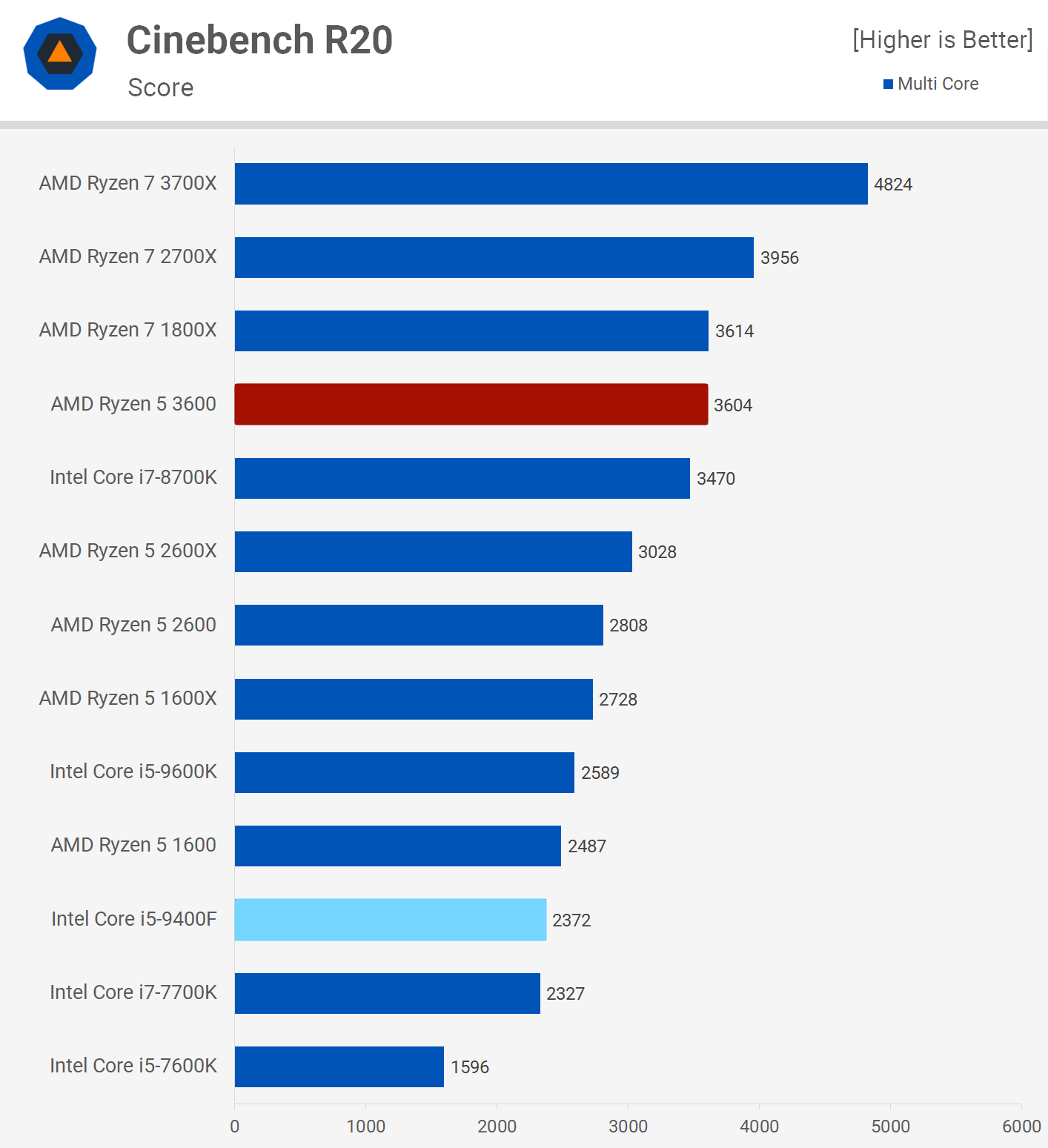
However, perhaps a more ominous sign for the Intel 6-core processor is the single core test, here the R5 3600 was still 14% faster, so it's rare that you'll find a productivity workload where the 9400F can match the 3600, let alone beat it.

Speaking of which, we have WinRAR, a traditionally strong showing for Intel processors. That's no longer the case though with the arrival of 3rd-gen Ryzen. Here the R5 3600 was 84% faster, so quite the shellacking there.
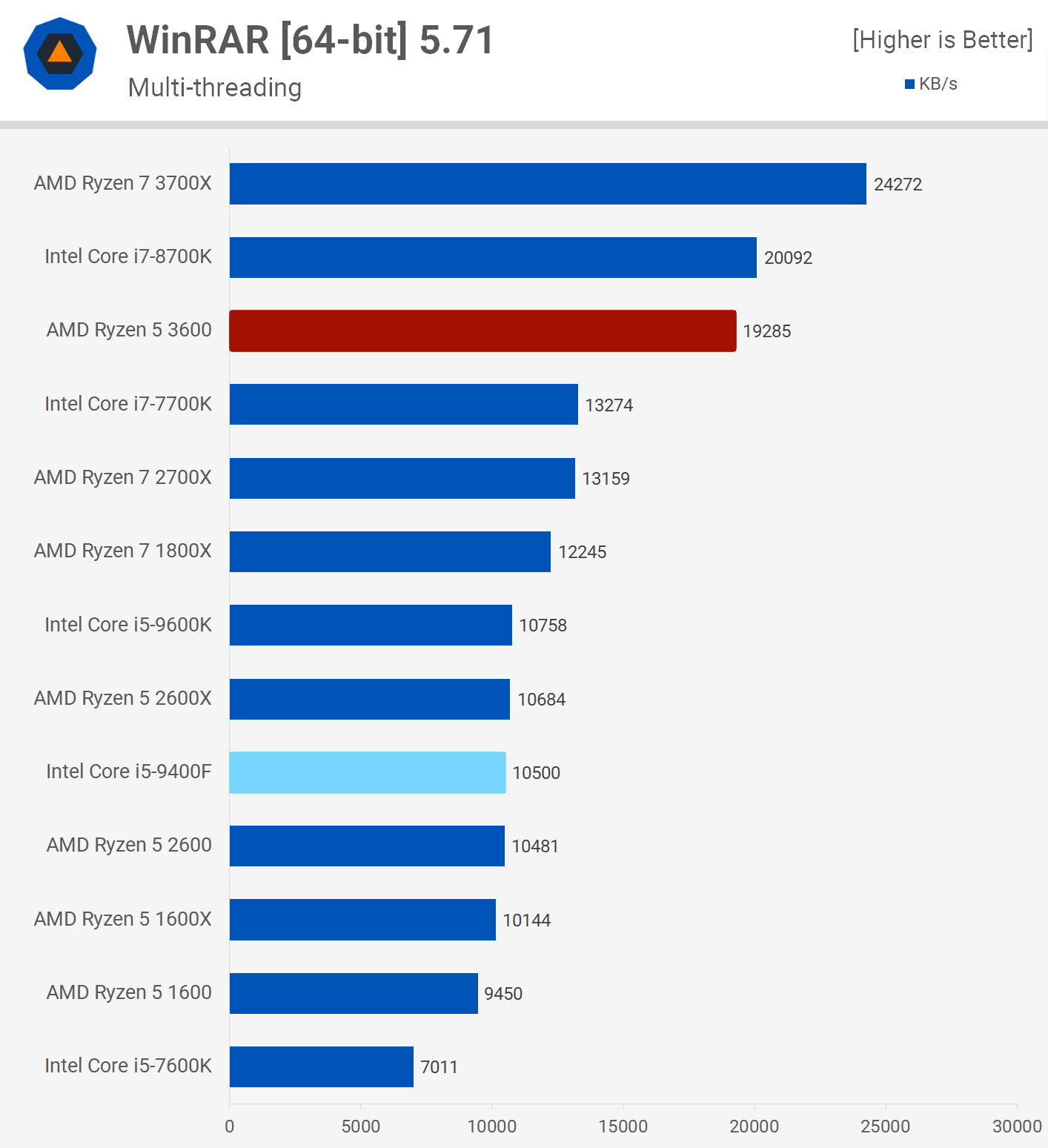
Moving on to 7-zip, the R5 3600 was 57% faster when comparing compression performance and it's remarkable that the margin widens further when comparing decompression performance where the 3600 was 66% faster.
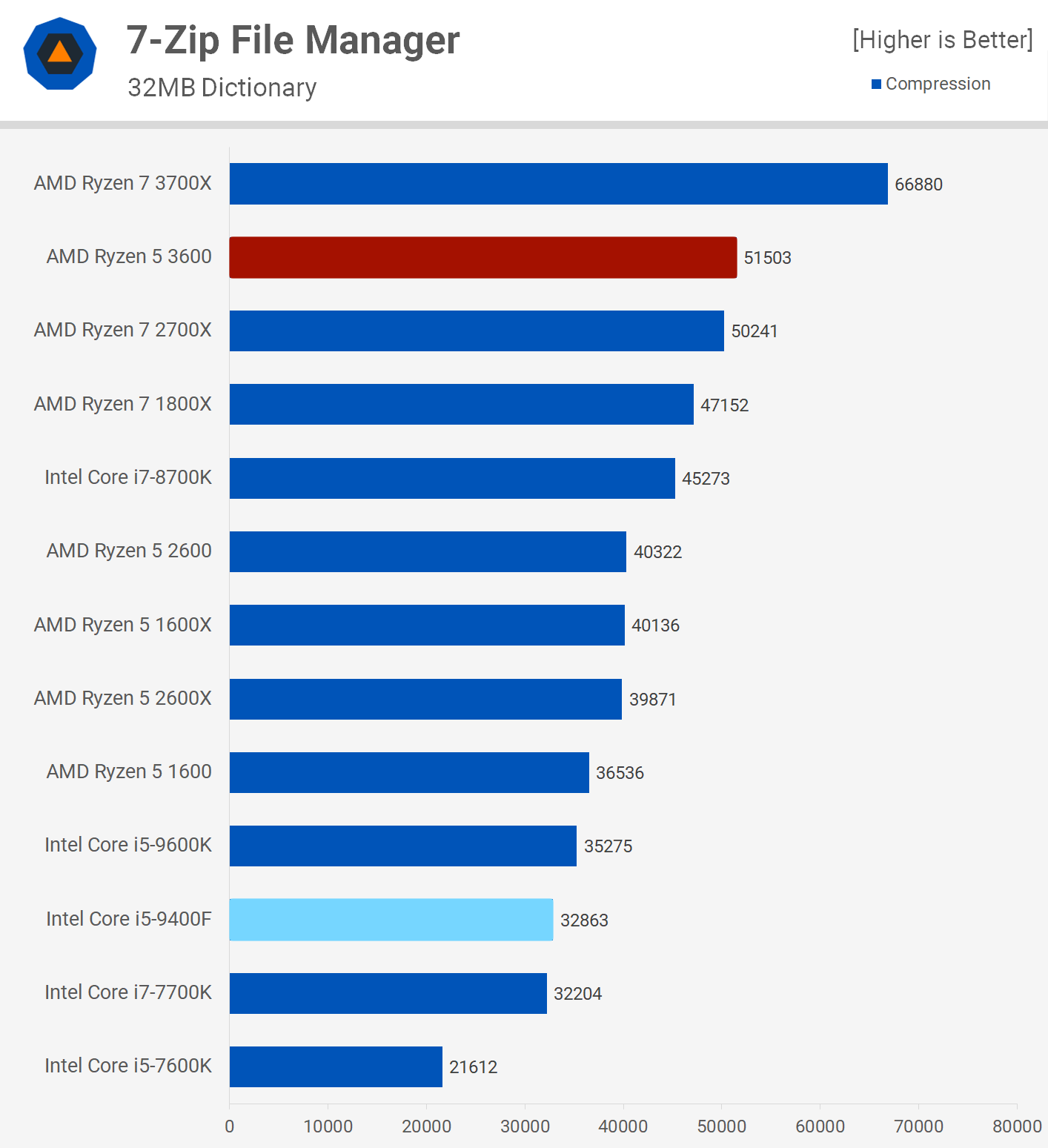
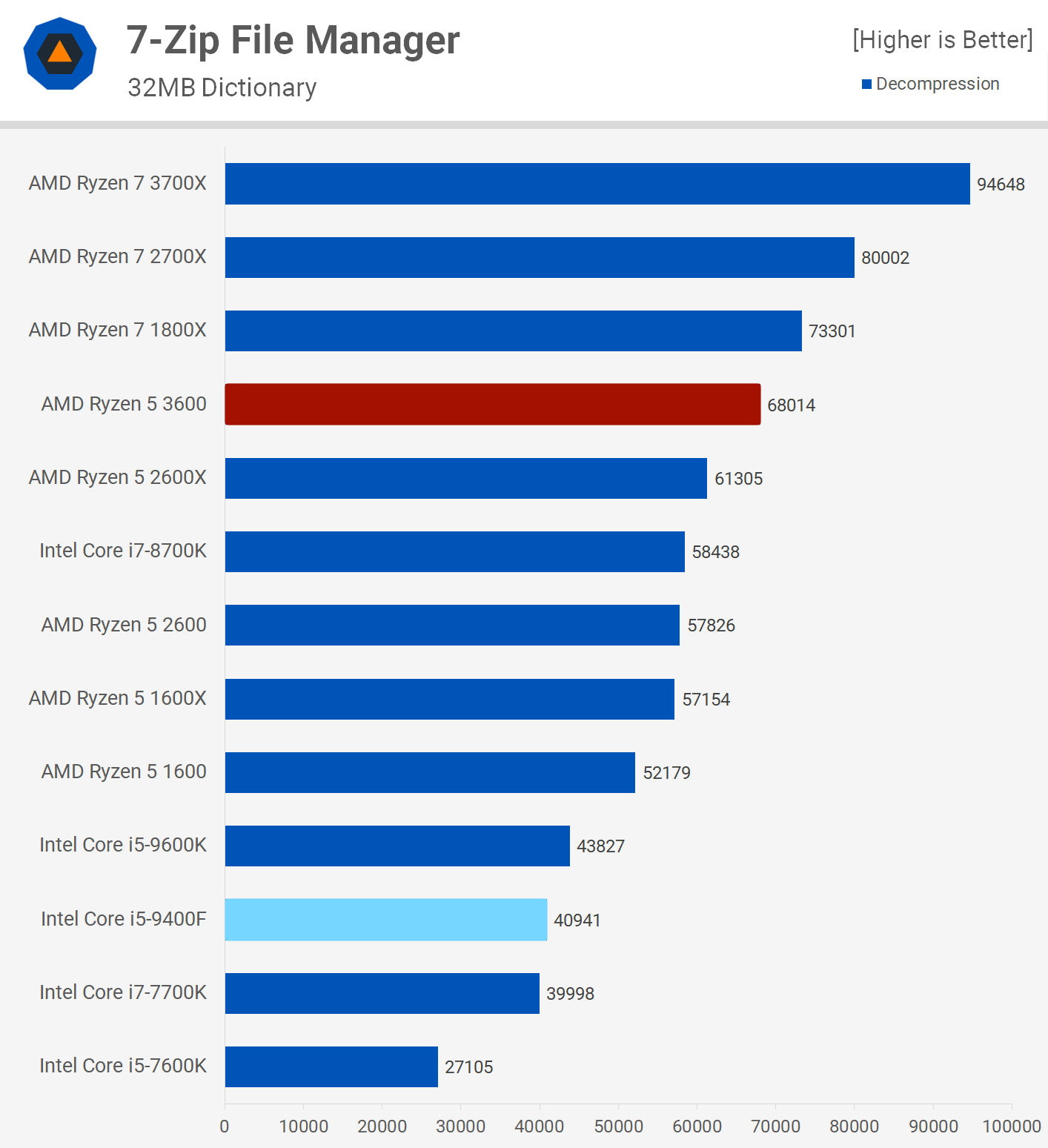
Adobe Premiere shows the Core i5's best showing yet as the R5 3600 was 26% faster. Still a big win for AMD but at least the margin is somewhat competitive this time.
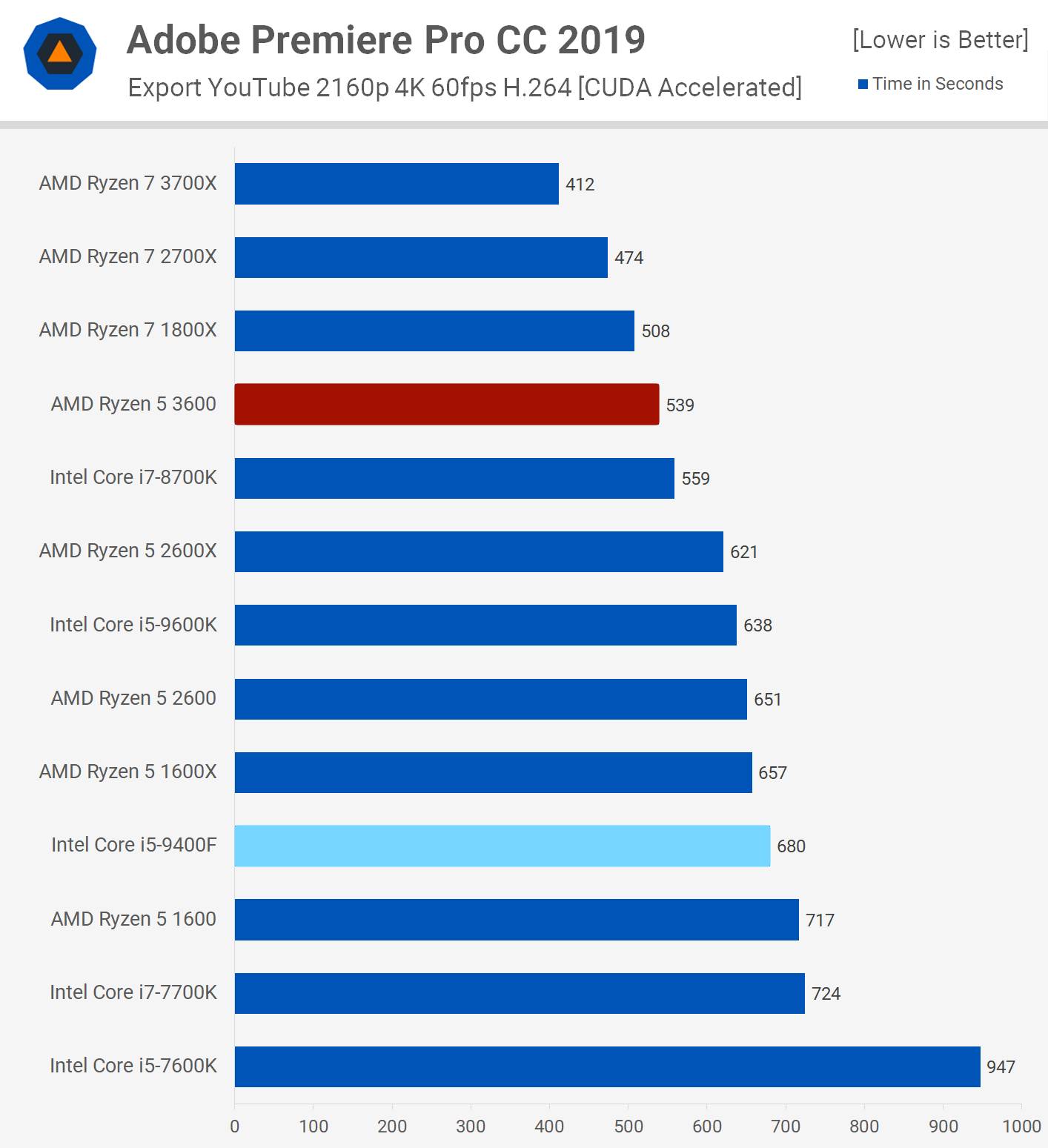
The R5 3600 quickly gets back to crushing it though with a 49% win in the V-Ray benchmark. Let's see what's in store for our last two productivity tests.
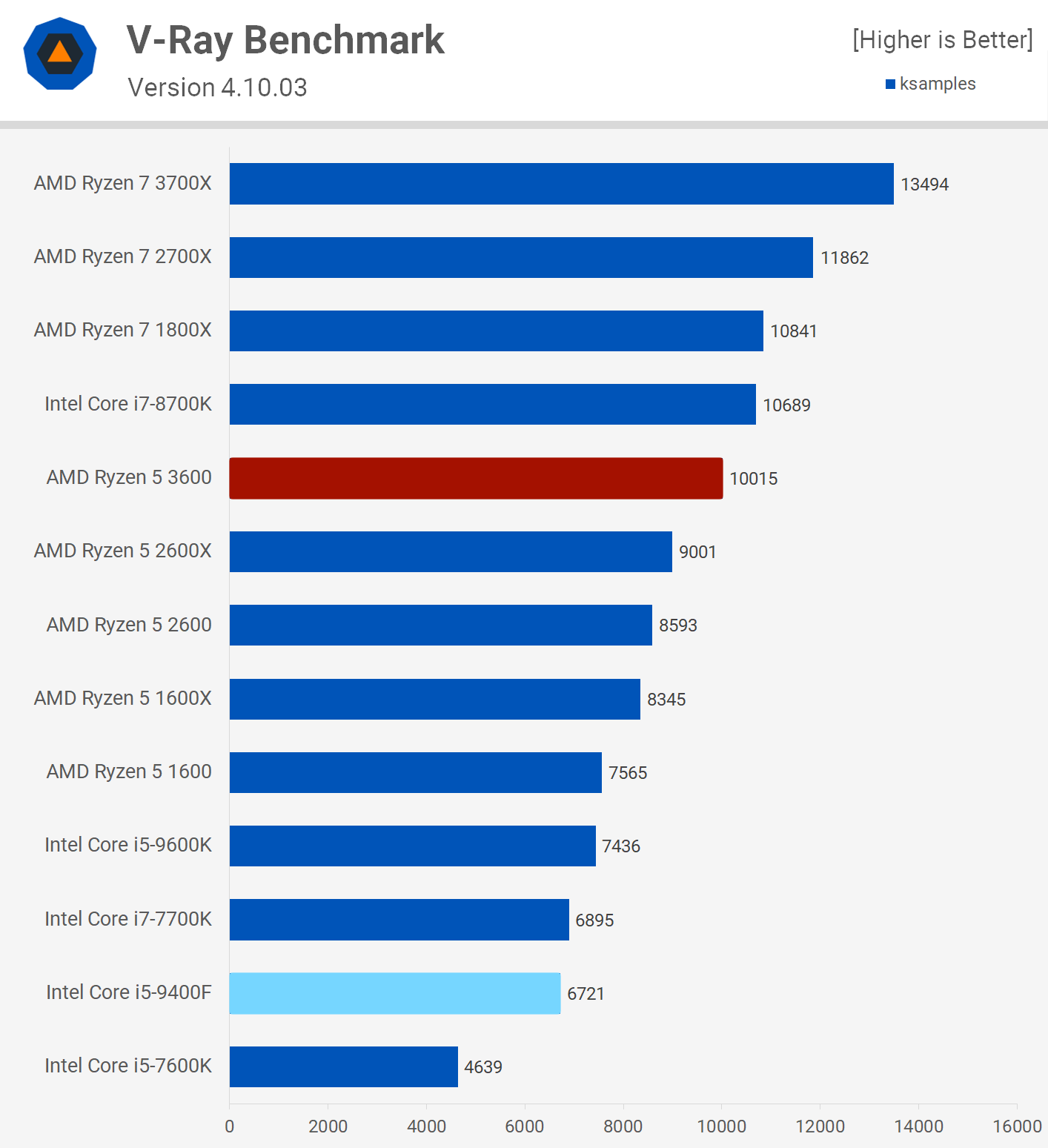
When testing with Corona, the R5 3600 was 58% faster than the 9400F taking just 146 seconds to complete the test against the Core i5's 230 seconds.
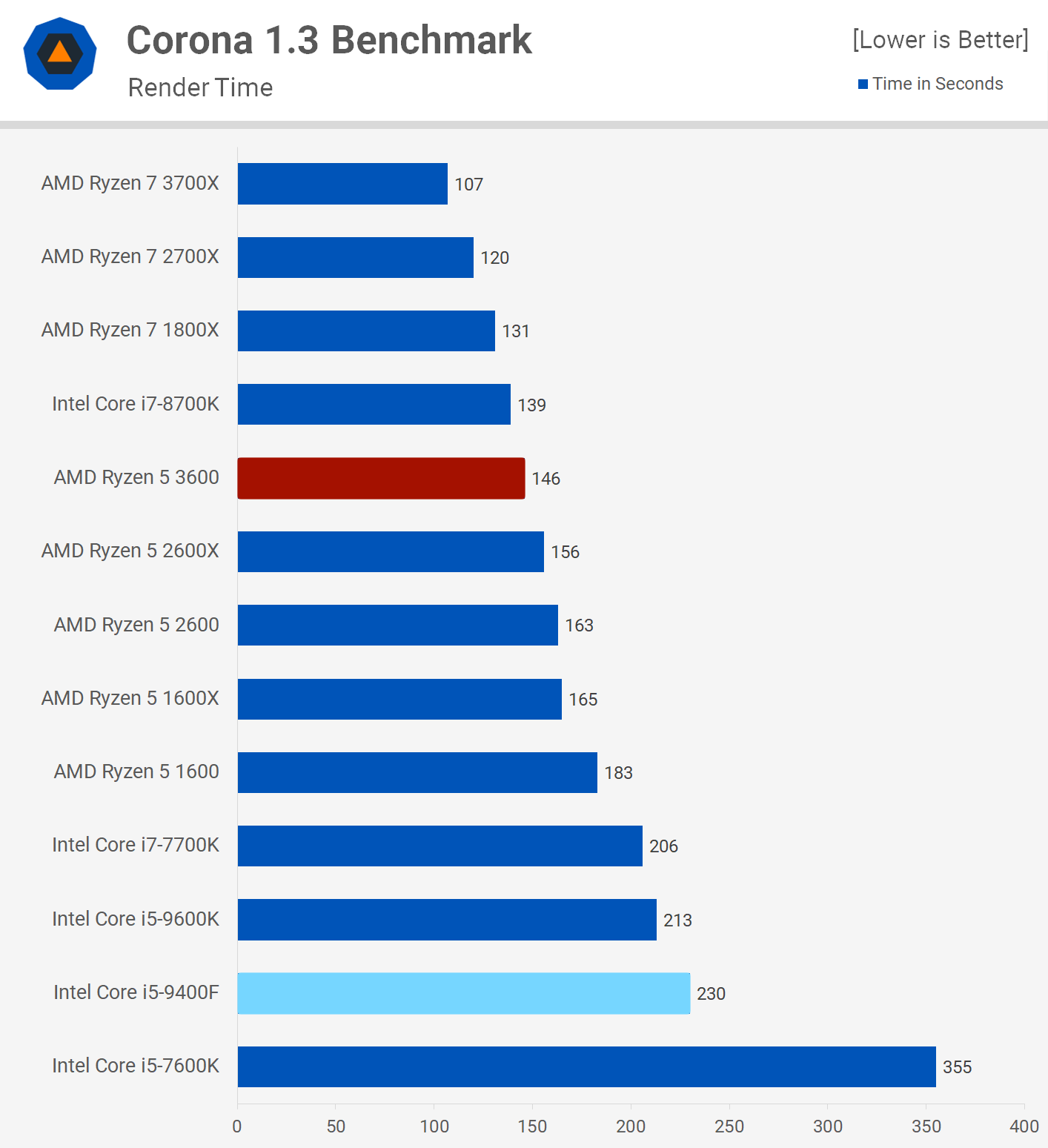
And finally when running the Blender Open Data benchmark, the Ryzen is 53% faster.
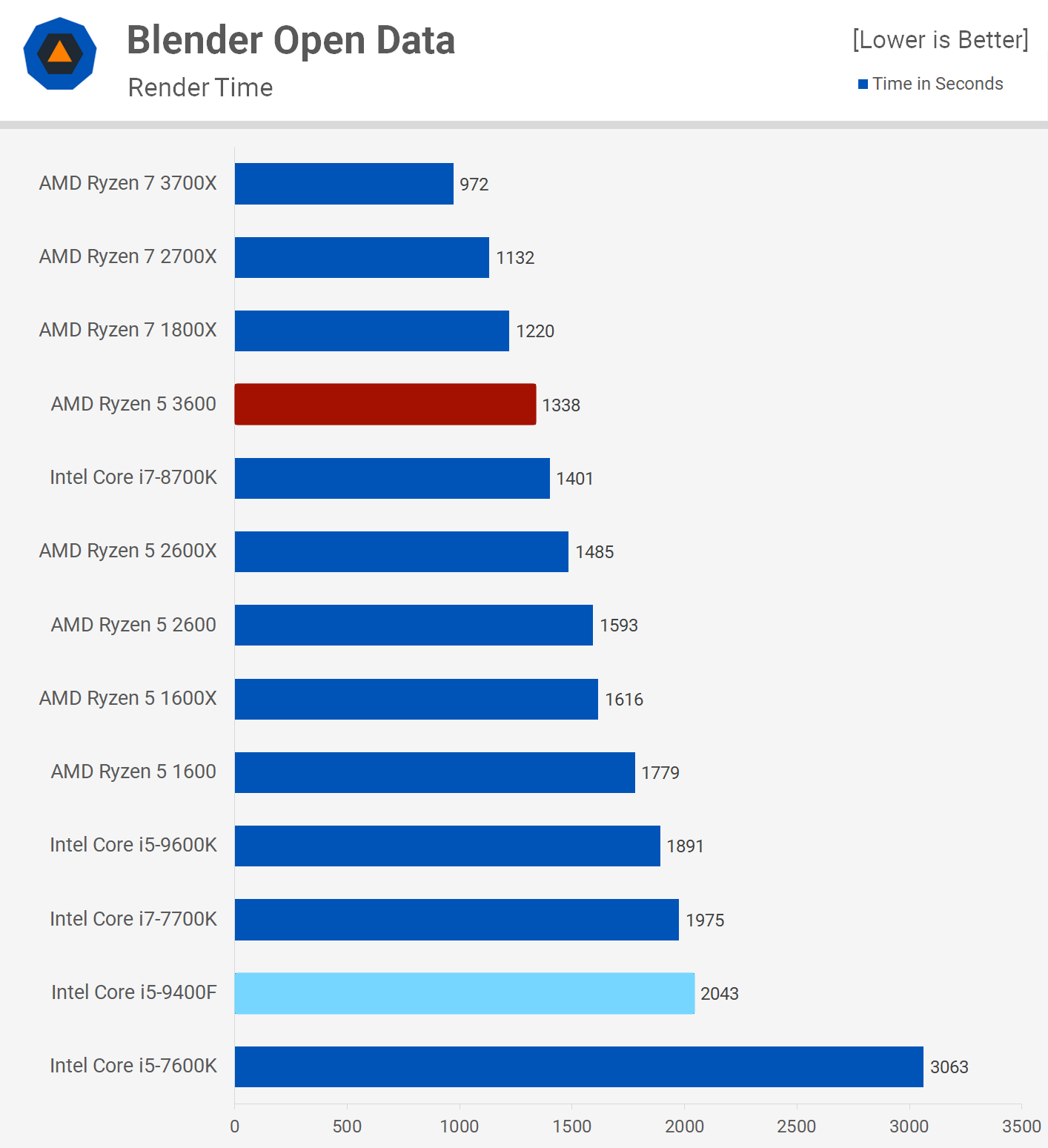
Power Consumption
The Intel Core i5 9400F gets its first win. It consumed 22% less power than the R5 3600 in the Blender benchmark though you must take in consideration that it was also 35% slower, so performance per watt still favors the Ryzen processor.

Gaming Benchmarks
Moving on to gaming testing, first up we have Assassin's Creed: Odyssey. Here the R5 3600 boosted frame rates by almost 30% over the 9400F and I expect we'll see more results like this in core heavy games.
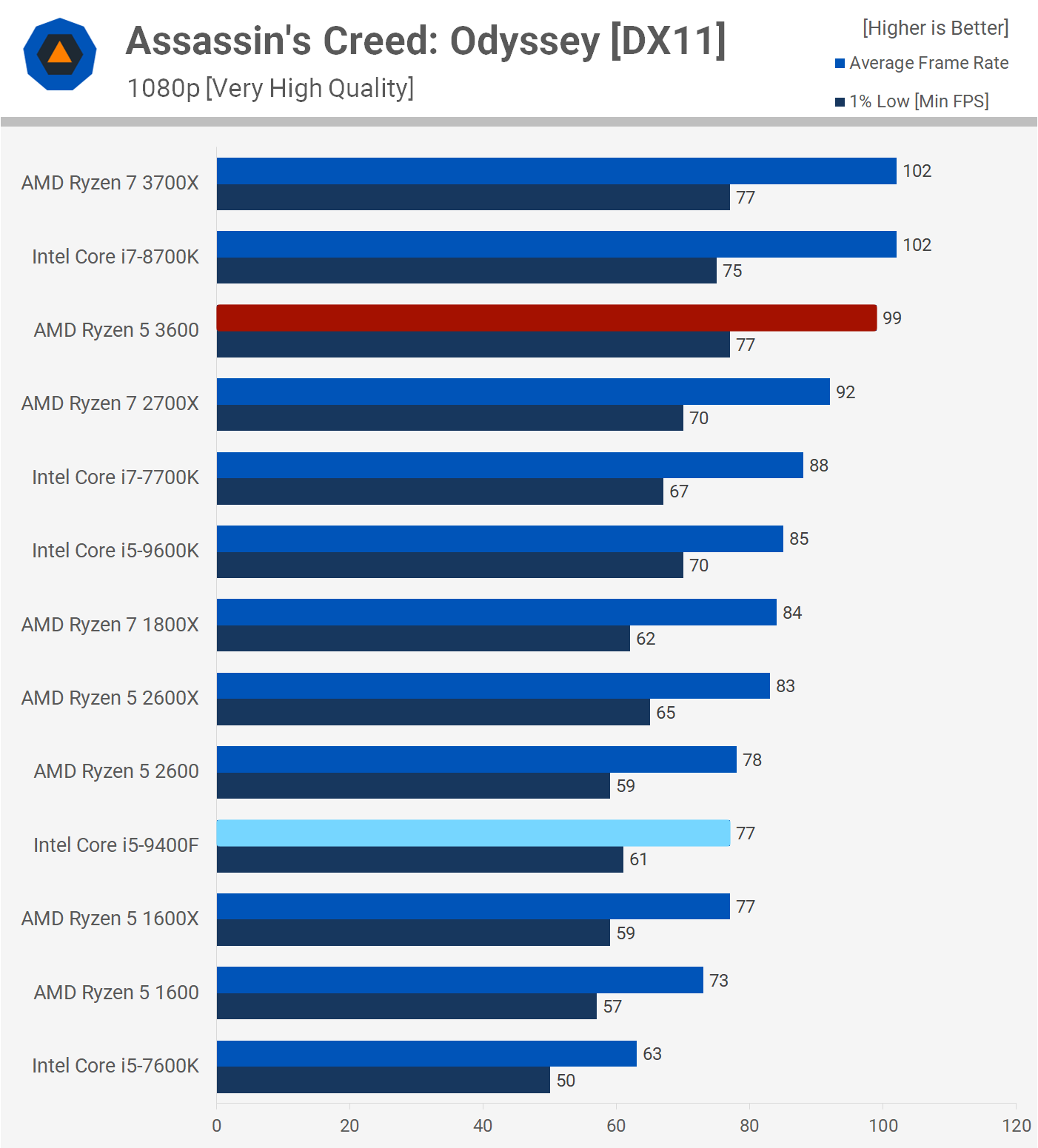
The Ryzen processor was just 6% faster in Battlefield V when looking at the average frame rate, but 34% faster when measuring 1% low performance, The R5 3600 did provide a noticeably smoother gaming experience in this title.

The gaming experience when testing with Shadow of the Tomb Raider was similar with both CPUs, though the average frame rate was 4% higher with the R5 3600, while the 1% low performance was improved by 10%.

We also see a solid performance uplift in The Division 2, the R5 3600 provided an 18% performance uplift for the average frame rate and a 29% boost for the 1% low.
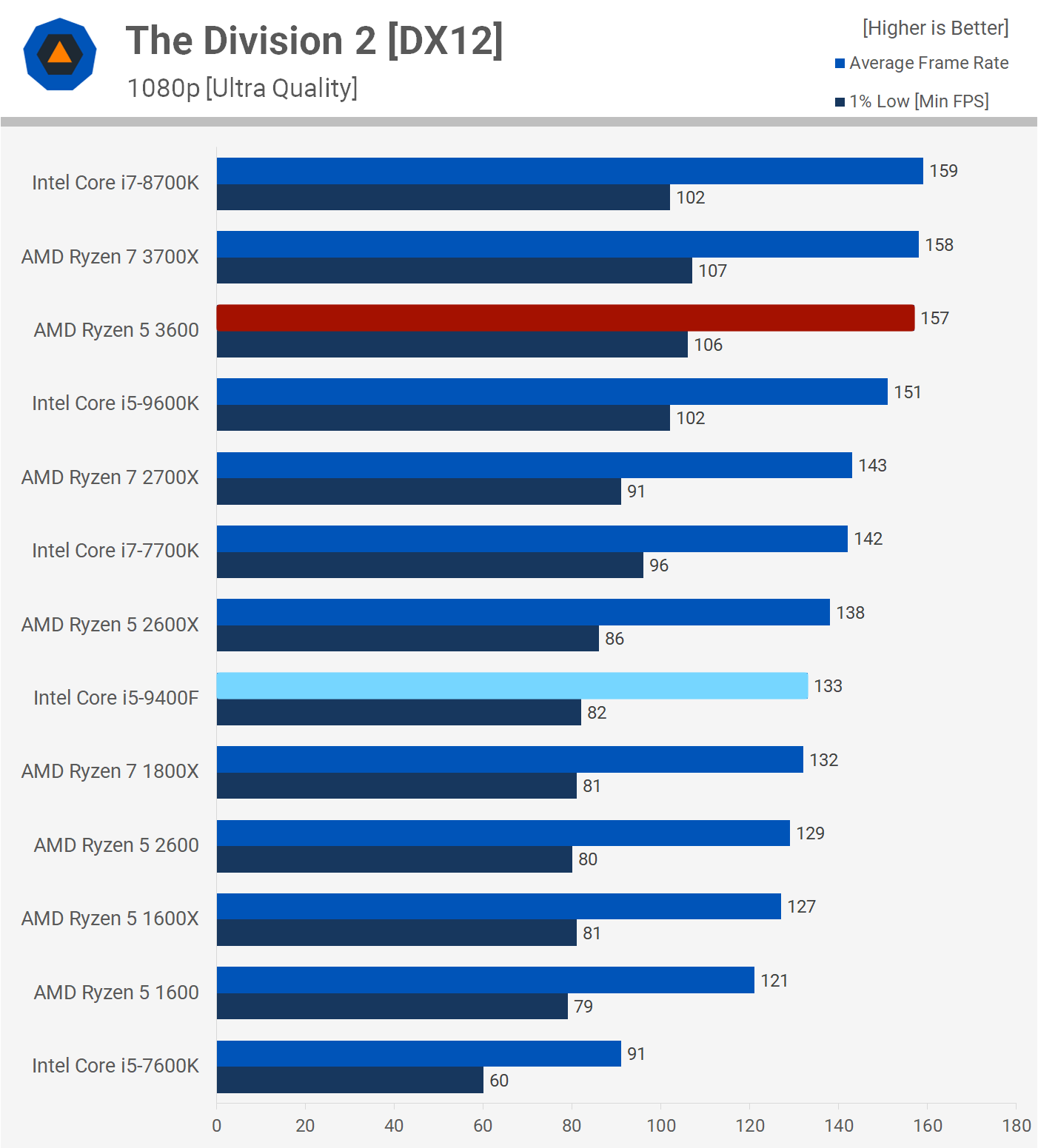
As is often the case, Far Cry New Dawn does trip up the Ryzen processors and here the 9400F managed to take the lead, beating the R5 3600 by up to 19%, so a very convincing win for the Core i5 processor.

Frame rates in Rage 2 were quite close with an edge to the Ryzen processor in the 1% low result, but overall both felt very similar in actual gameplay.

We see something similar thing in Hitman 2, average frame rates were a match but the R5 3600 was slightly stronger when it came to the 1% low performance.
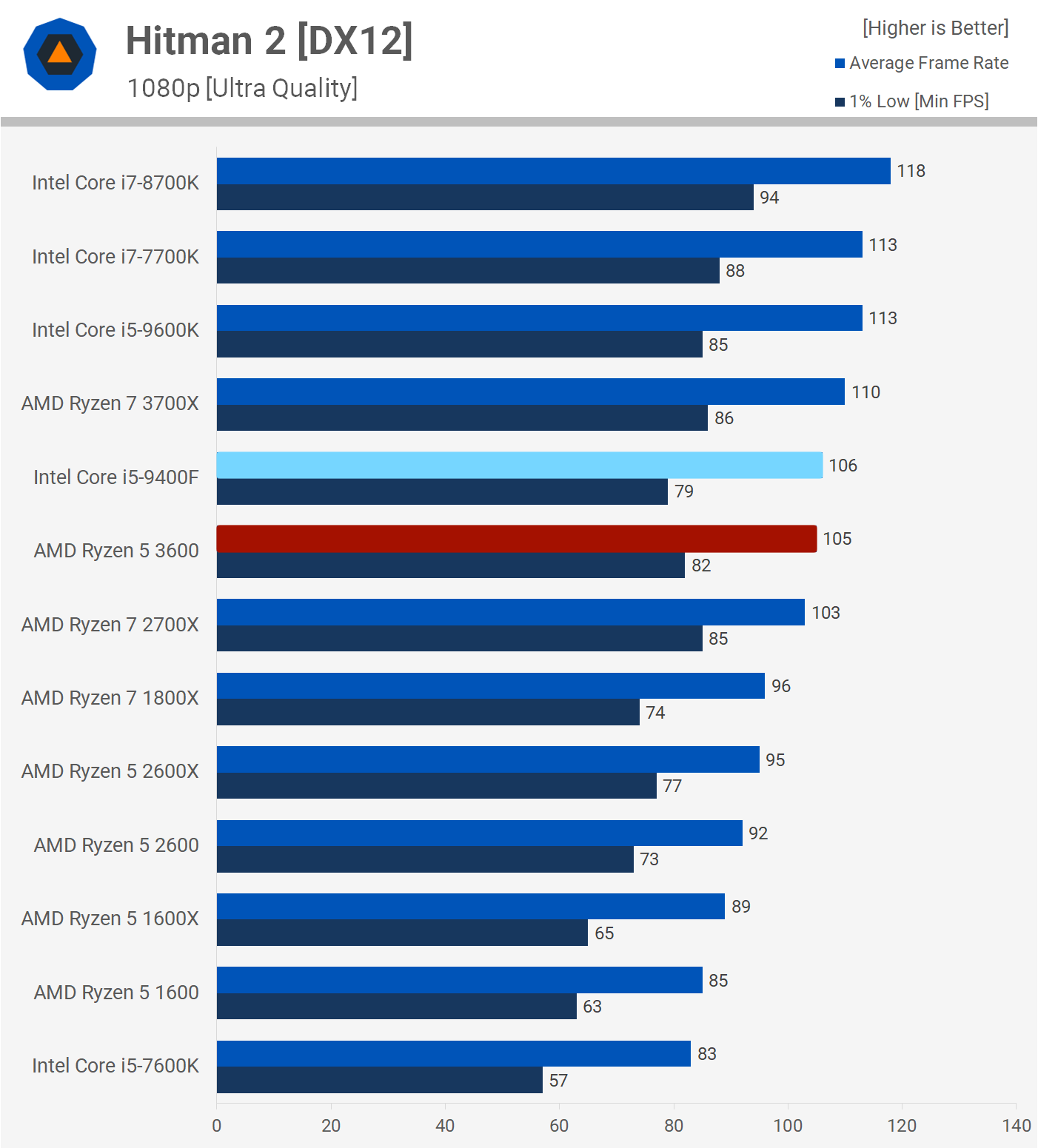
And finally we have Total War: Three Kingdoms and as was the case with Rage 2 and Hitman 2, we find close average frame rate results, but an advantage to AMD when looking at 1% low performance. In this case the difference was more substantial with Ryzen offering 12% better minimum frame rates.
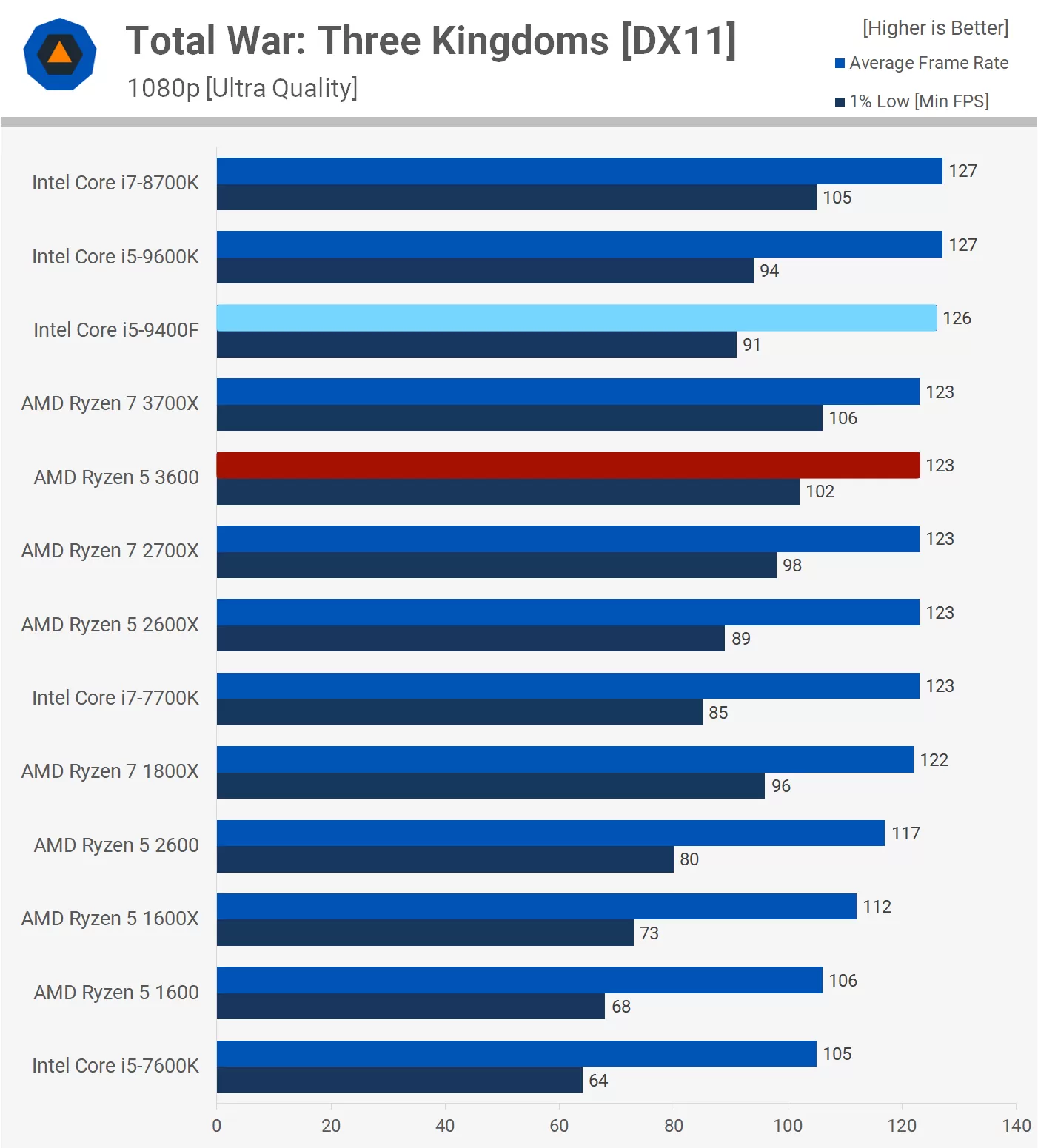
Cost per Frame and Wrap Up
That was interesting and even a bit brutal. We have to admit at times we felt we were feeding the 9400F to a woodchipper. Gaming was definitely closer than productivity but even then the Ryzen shined more than its predecessors ever could.
Looking exclusively at gaming, on average the Ryzen 5 3600 was just 11% faster than the 9400F. Some of this is due to CPU limited titles such as Hitman 2 and Rage 2, but we don't feel it's a misleading margin given the Intel CPU will be as fast or faster in older titles. We got a glimpse of that with Far Cry which is built on a dated game engine.
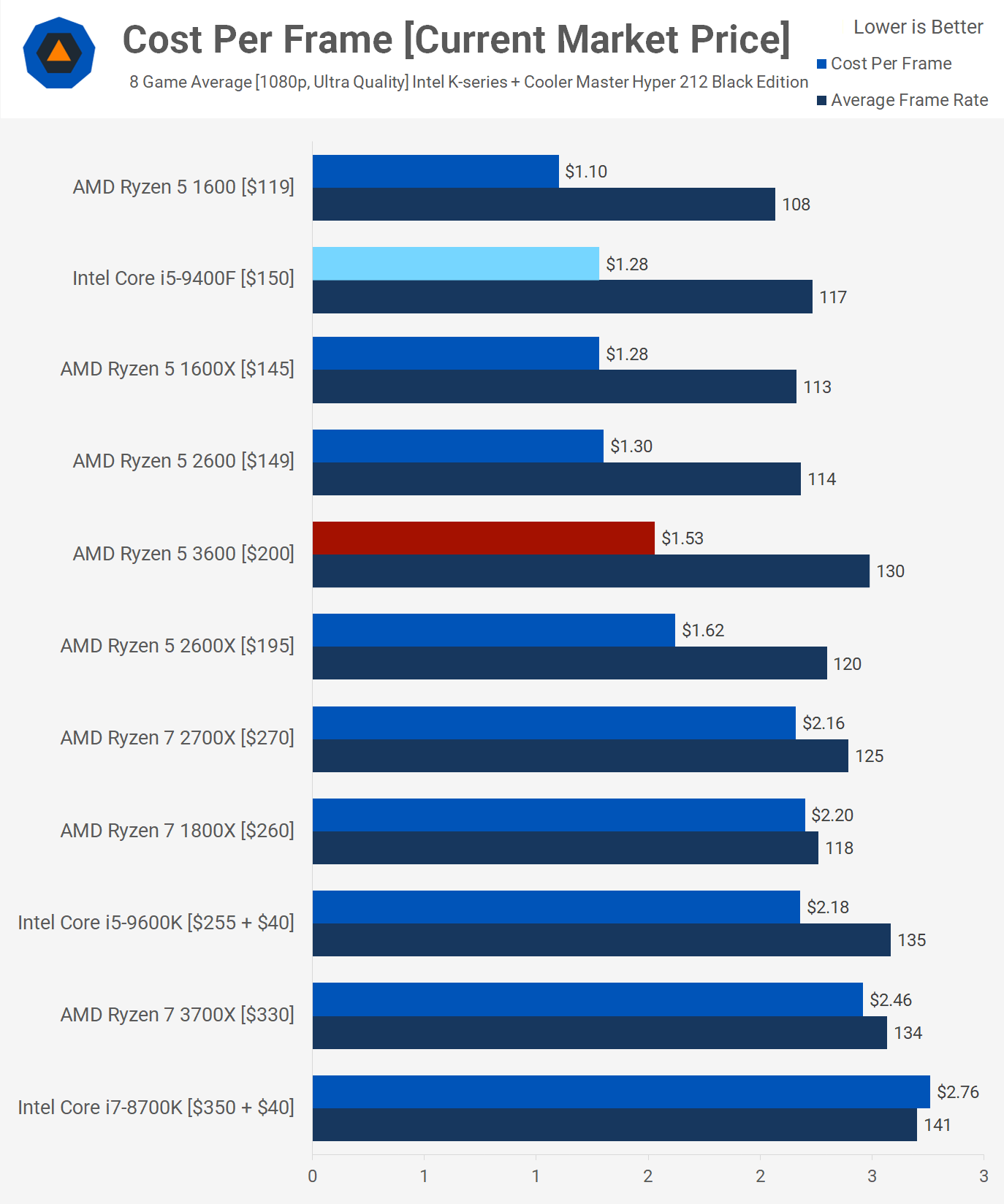
Overall the R5 3600 was 20% more costly per frame when using average frame rates for the calculation but we feel that this doesn't paint the whole picture for gaming because at times the 9400F wasn't nearly as smooth as the Ryzen processor, so let's check the 1% low results.

Here the R5 3600 was 12% more costly per frame. The margin is smaller but you should also take into consideration CPU heavy titles where the 9400F was stuttering a bit (Battlefield V and Assassin's Creed Odyssey, for example). It should be noted also that as long as AMD keeps offering the Ryzen 2600, it provides roughly the same price to performance ratio, but on AMD's more attractive platform and with an advantage in productivity tasks.
Ever since AMD launched the AM4 platform complete with a slew of Ryzen processors not only have they supported 2, 4, 6, 8 and now 12-core processors, all on the same socket, but they've managed to do so across three CPU generations. This makes recommending Intel's 8th and 9th generation LGA1151 platform difficult in 2019. Short of building a high-end Core i7-9700K or i9-9900K rig, we can't think of a scenario where it makes full sense.
The Core i5-9400F is a good processor today, but when you consider the platform, future upgrade options are slim. In two years you'll ideally want more than six threads and you will be stuck to second hand 8700K, 9700K or 9900K processors for a more powerful drop-in replacement. Unfortunately we don't believe the prospects will be great then either. Hoping over to eBay we found the cost of Core i7-7700K completed listings – that is 7th-gen Core i5 owners looking to upgrade – spending Ryzen 5 3600 money on the 36 month old quad-core.
But back to today's comparison, the Ryzen 5 3600 destroys the Core i5-9400F in core-heavy games and applications. It currently costs 33% more, but it was often 50% faster in applications and provided roughly 30% gains in modern games.
If you only have $150 to spend on a CPU, then the R5 2600 may be one of your best bets as that grants you the ability to upgrade to the 3700X, 3900X or 3950X a few years later and those CPUs will almost certainly be affordable on the second hand market in a few years time.
Shopping Shortcuts:
- AMD Ryzen 5 3600 on Amazon, Google Express
- Intel Core i5-9400F on Amazon, Google Express
- AMD Ryzen 5 2600 on Amazon, Google Express
- AMD Ryzen 7 3700X on Amazon, Google Express
- AMD Ryzen 9 3900X on Amazon, Google Express
- Intel Core i5-9600K on Amazon, Google Express
- GeForce RTX 2070 Super on Amazon, Google Express
- GeForce RTX 2060 Super on Amazon, Google Express
- GeForce GTX 1660 Ti on Amazon, Google Express
